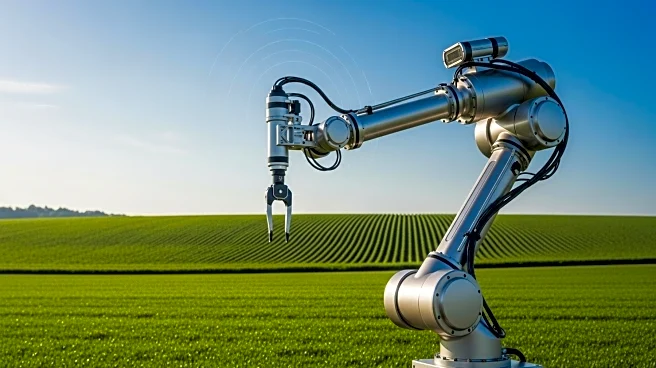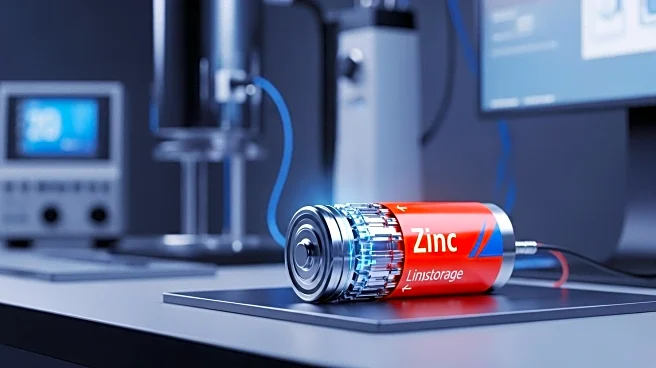What's Happening?
The agricultural robotics market is experiencing rapid growth, with projections indicating a valuation between $16.9 billion and $18.2 billion by 2025. This expansion is fueled by the increasing demand for automation in farming practices to meet rising food requirements and address labor shortages. Robotics are becoming essential tools in precision farming, enhancing efficiency and sustainability. Technologies such as robotic milking systems, drones, and autonomous tractors are being integrated into farming operations to improve productivity. Governments and industry players are investing heavily in these technologies, making them more accessible across various regions and farm sizes. The market is driven by factors such as rising food demand, labor shortages, and government support through subsidies and modernization initiatives.
Why It's Important?
The growth of the agricultural robotics market is significant for several reasons. It addresses the global challenge of increasing food demand, projected to rise by 59-98% by 2050, by enabling farms to produce more with limited resources. Automation helps mitigate labor shortages, which are prevalent in countries like the UK and India, by taking over tasks such as planting, weeding, and harvesting. Government support through policies and programs encourages the adoption of robotics, making advanced machinery and digital tools more accessible to smaller and mid-sized farms. This shift towards automation not only enhances farm productivity but also promotes sustainable farming practices, reducing waste and improving resource management.
What's Next?
The agricultural robotics industry is expected to continue evolving with advancements in AI, machine vision, and broadband connectivity. AI-powered robots will enhance decision-making in farming, offering adaptive solutions for weed control, pest detection, and yield prediction. Sensor technologies will play a critical role in data-driven farming, providing real-time information on crop health and soil conditions. The rise of the Robot-as-a-Service model will make robotics more accessible to smaller farms, reducing upfront costs. Swarm robotics and soft robotics are emerging trends that promise efficient task execution and delicate handling of crops. The industry will focus on addressing challenges such as high initial costs, technical adaptability, and regulatory issues to ensure widespread adoption.
Beyond the Headlines
The adoption of agricultural robotics has deeper implications for rural communities, where automation may lead to socio-economic changes. Concerns about data privacy, safety, and job loss could slow down deployment, necessitating fair policies and transitional support. The industry is responding with strategic investments in R&D, collaboration between startups and established manufacturers, and training programs to reduce the learning curve for farmers. These efforts aim to create an open and collaborative ecosystem where innovation reaches smaller operators, ensuring that robotics become a scalable and sustainable part of modern farming systems.











